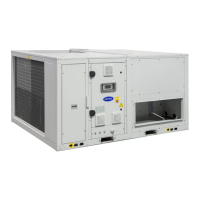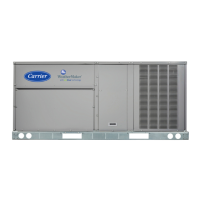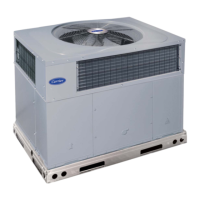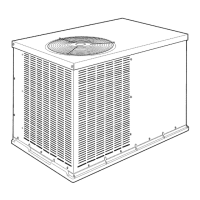What to do if my Carrier 50FC LCD has strange characters or a blank display?
- PPeter MackAug 6, 2025
If your Carrier Air Conditioner's LCD shows strange characters or a blank display when switching on, check the following: 1. That the software in the flash is correct. 2. The addresses of the ?PC3 control board and the Graphic terminal (check that they comply with the requirements of the current application). 3. The connection between the Graphic terminal and the ?PC3 board.









